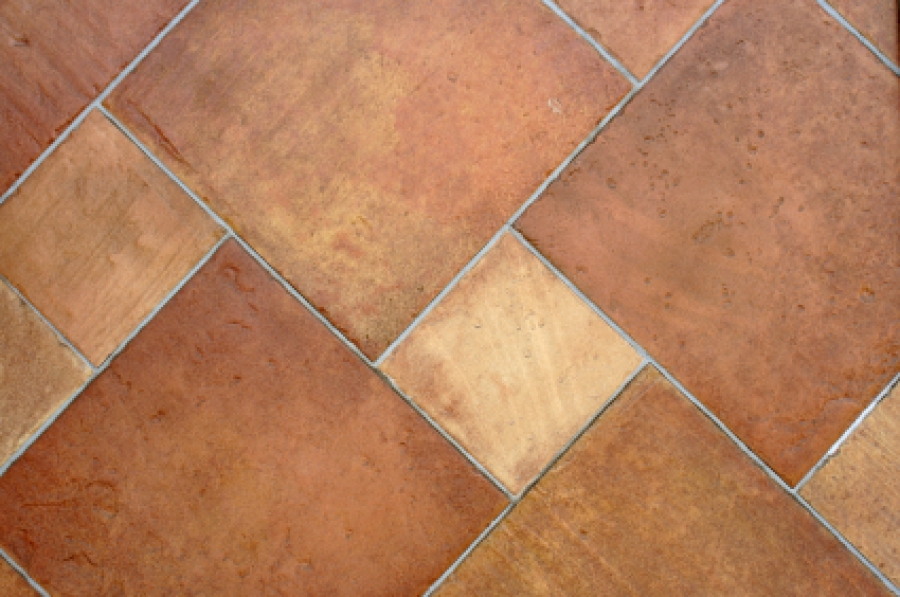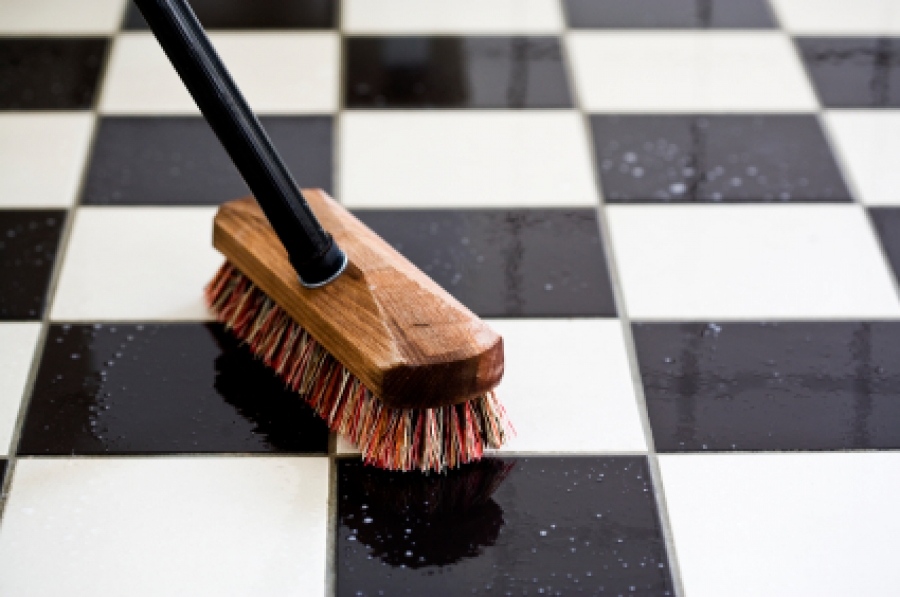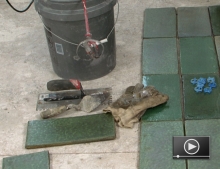Tile Flooring 101: Types of Tile Flooring
Video
Tile flooring is manufactured from a variety of materials such as clay, stone, metal, terrazzo, and quartz. Each type of tile flooring has its own defining characteristics. Generally speaking, the two most commonly used types of tile flooring are ceramic and natural stone.
Ceramic Tile
Ceramic tile is manufactured from clay materials that are quarried, prepared, and then formed into a mold. Common forming methods for ceramic tile include dry press, extruded, and slush mold. The dry press forming method involves a mixture of dry material being pressed into a mold under extreme pressure. Extruded ceramic tile is formed when a mixture of slightly wet material is extruded into a mold. Slush mold is a forming method in which a mixture of very wet material is poured into a mold and then hardened in a kiln at an extremely high temperature.
Porcelain vs. Non-Porcelain
Ceramic tile can best be characterized as either porcelain or non-porcelain. Traditional ceramic tile is non-porcelain and is made from white, red, and/or brown clay and other minerals. Porcelain ceramic tile is made from clay and minerals as well, but it also contains 50% of a white dust or sand called feldspar. Feldspar is a type of crystal found in rock that acts as a "flux" during the kiln-drying process, melting into a glass-like material and bonding all of the molded ingredients together. Minor modifications to the ingredients of ceramic tile or the kiln-drying process (i.e., to the temperature and type of kiln) create enormous variety in the appearance and characteristics of manufactured ceramic tile flooring products.
Porcelain and non-porcelain ceramic tile can be either unglazed or glazed. Glazed tile has a matte, semi-gloss, or high-gloss finish applied to the surface during the manufacturing process. In the past, glazed tile was kiln-fired twice, once to harden the tile mold and a second time to harden the glaze. Today, in addition to double-fired ceramic tiles, an automated single-fired manufacturing process called Monocuttura hardens a glazed mold in one step. Glazed tiles have increased stain resistance, scratch resistance, and traction, as well as decreased water absorption, in comparison to an unglazed tile.
Non-porcelain, ceramic tile is among the most economical types of tile flooring. Porcelain ceramic flooring is more expensive than non-porcelain and can be harder to work with. However, it offers greater durability, natural stain resistance, minimal water absorption, and through-bodied color. Many types of tile are manufactured in a similar fashion to ceramic tile, but they are less common. These include brick, cement, glass, encaustic, saltillo, and terra cotta tile. The varying materials and manufacturing processes create distinctive product characteristics.
Natural Stone Tile
Natural stone tile is produced from natural materials that are quarried, slabbed, finished, and cut to size. Common types of stone used as flooring tile include granite, marble, limestone (including travertine), and slate. Among these types of natural stone are thousands of varieties with characteristics that depend on where and when the stone was quarried.
Granite is a type of igneous rock that is very dense and hard. Its distinctive appearance is due to speckled minerals found within the rock, its unique veining, and the thousands of available colors. Granite is nearly impervious and, once it is polished, resists scratching. It is an excellent choice for flooring in kitchens and high-traffic areas.
Marble is a type of metamorphic rock that has rich veining and is available in a variety of colors. Marble is more porous than granite and is not recommended for kitchen flooring unless honed and then sealed on a regular basis.
Limestone is a type of sedimentary rock that offers an earthy appearance in both light and dark shades. The surface can be textured or polished smooth. Limestone is less dense than granite and marble. It can be easily stained and is also prone to scratching. It is not recommended for kitchen or high-traffic flooring applications.
Travertine is a type of limestone that offers an unusual crystallized appearance with an earthy tone. Travertine is a soft, porous stone with a natural surface that has pitting or divots. A honed or polished surface can be achieved after filling the surface voids. Travertine is not recommended for kitchen floors, as it can be easily scratched and stained. Special care and surface sealing is required to maintain travertine.
Slate is a type of metamorphic rock that is extremely dense and very durable. Slate is available in darker earthy tones. The surface of slate is naturally textured unless a smooth, honed finish is achieved. Slate is an excellent choice for kitchen and high-traffic area flooring.
Natural Stone Tile Surface Finishes
The face of stone tile flooring typically has one of three types of finishes applied: natural, honed, or polished. The finishing process of natural stone begins once the stone is quarried and cut into a rough slab. The rough slab face is polished with abrasive pads. Extremely coarse abrasive pads are used first, then less coarse pads are used until the final buffing. The tiles are then cut to size by a stone fabricator. The surface finish you apply will depend on where you intend to use the stone tile and the desired appearance. Natural surfaces are unfinished and have an earthy, dull appearance. Texture and pitting are visible characteristics of natural stone tile. Honed surfaces are achieved by terminating the finish process prior to buffing. The smooth, matte appearance is excellent for high-traffic and wet areas to prevent slipping and wear. Polished surfaces are highly reflective with a mirror-like finish. The process of achieving a polished finish is a benefit to the porosity of stone tile, creating an almost impervious surface. However, it also creates a more slippery surface. In addition to these common types of finishes, other types are available that offer distinctive appearances and present their own advantages and disadvantages. Depending on the type of stone tile you choose and its intended application, you might opt for one of the other surface finish types. It is best to consult with a stone fabricator to determine the best surface finish for your project.

Jeff Calcamuggio
Jeff is an Editor-at-Large for Buildipedia.com who writes and edits Featured At Home and Knowledgebase content. Prior to joining Buildipedia, Jeff's work experience included carpentry, construction documentation, specification writing, construction administration, project management, and real estate property inspection. Jeff is a member of the Construction Specifications Institute (CSI) and an educator at Columbus State Community College and enjoys challenging DIY home improvement projects.
†





